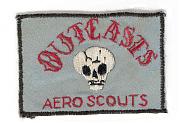Under the right battlefield conditions, sophisticated military technologies give Western powers remarkable advantages. Under the wrong conditions and employed with unreasonable expectations, high-tech weapons inflict more damage on our own political leaders and national purpose than they do on the enemy.
Precision-targeting systems and other superweapons are dangerously seductive to civilian leaders looking for military wins on the cheap. Exaggerated promises about capabilities — made by contractors, lobbyists and bedazzled generals — delude presidents and prime ministers into believing that war can be swift and immaculate, with minimal friendly or even enemy casualties.
It's a lethal myth. The siren song oftechno-wars fought at standoff range makes military solutions more attractive to political leaders than would be the case were they warned about war's costs at the outset. Inevitably, the “easy” wars don't work out as planned. Requiring boots on the ground after all, they prove exorbitant in blood, treasure, time and moral capital...
A paradox of this era of dazzling technologies is that the conflicts we face are born of ethnic bigotry and faith gone haywire — atavistic challenges that cannot be resolved with guided bombs or satellite imagery.
Employed incisively, technologies certainly help our troops, but they aren't a substitute for troops. And they won't be. Yet, the false promises will continue.
We've been through this before. In the 1950s, large ground forces were supposed to be obsolete, superseded by missiles. Then came Vietnam, followed by a succession of brutally human conflicts, from Lebanon through Somalia to the Balkans. For the 78 days of the Kosovo campaign, NATO aircraft attempted to force Serbia — a weak, miniature state — to agree to treaty terms. In the end, it took the threat of ground troops to achieve the international community's goals. After the firing stopped, we found that our expensive, sophisticated technologies had been fooled by cheap Serb mock-ups of military vehicles.
Why are defense contractors and partisan generals nonetheless able to convince Congress and one presidential administration after another that technology has all the answers? Because Congress and the White House want to believe machines will get them off the hook when it comes to sending our forces into battle. And there are huge practical incentives to buy big-ticket weapons systems from politically supportive defense contractors.
The defense industry silences military leaders who know better by employing them on generous terms after their retirement from service. The system is legal, but it's morally corrupt and ethically repulsive...
The promises made for advanced military technologies are all too seductive to political leaders with no experience in uniform. Hype kills. Until we abandon the myth of immaculate wars, our conflicts will continue to prove far more costly than the technology advocates promise.











 , be able to figure out that the key to these transformations would be in Phase IV operations. Figuring how to neutralize the basic combat power of the existing Iraqi conventional forces, a/o the start of the war, was, actually, a fairly simple, if highly detailed, planning exercise. Figuring out how to do the actual transformations - the started goals of the war - is both much more complex and, at the same time, involves a totally different skill set.
, be able to figure out that the key to these transformations would be in Phase IV operations. Figuring how to neutralize the basic combat power of the existing Iraqi conventional forces, a/o the start of the war, was, actually, a fairly simple, if highly detailed, planning exercise. Figuring out how to do the actual transformations - the started goals of the war - is both much more complex and, at the same time, involves a totally different skill set.
Bookmarks